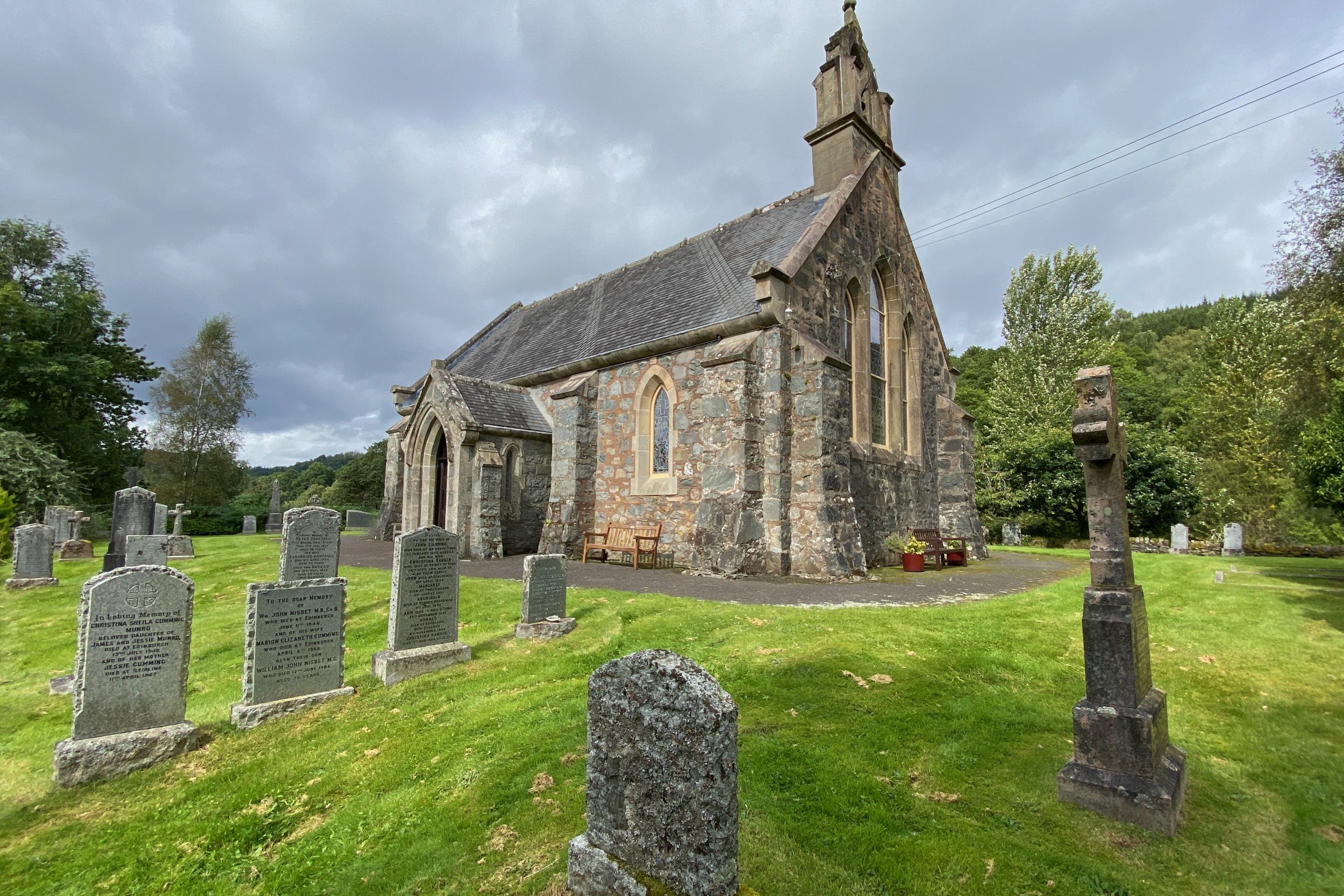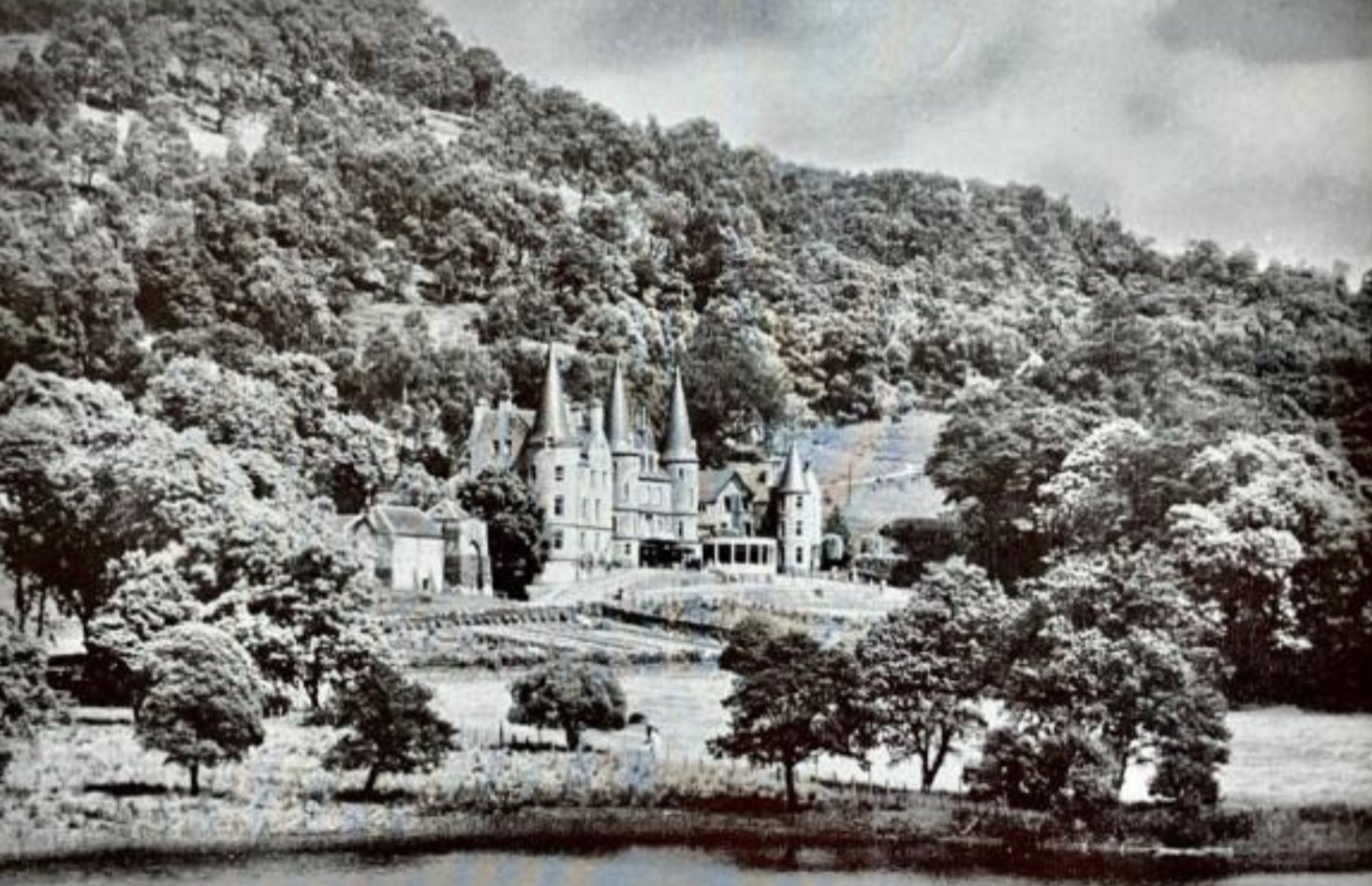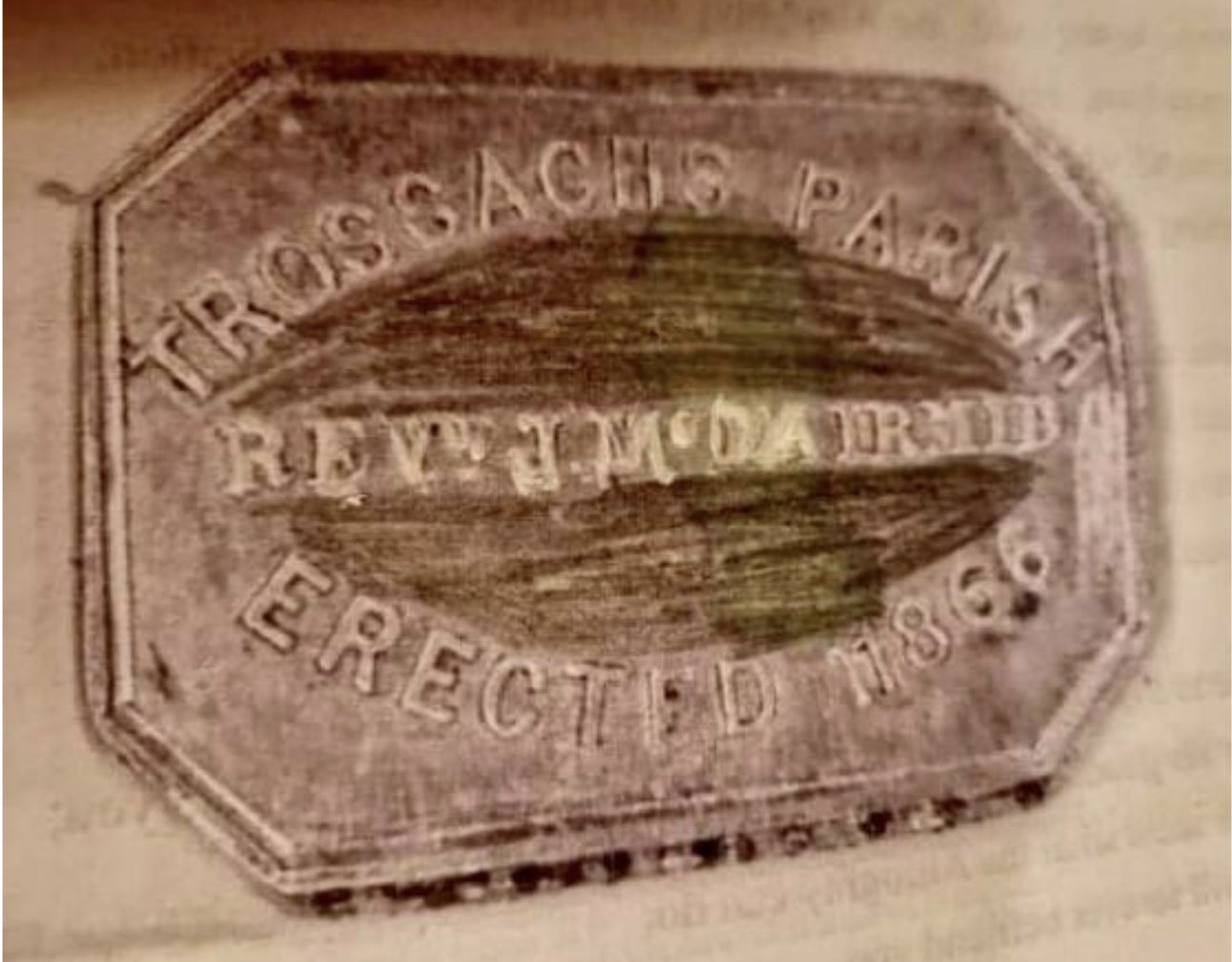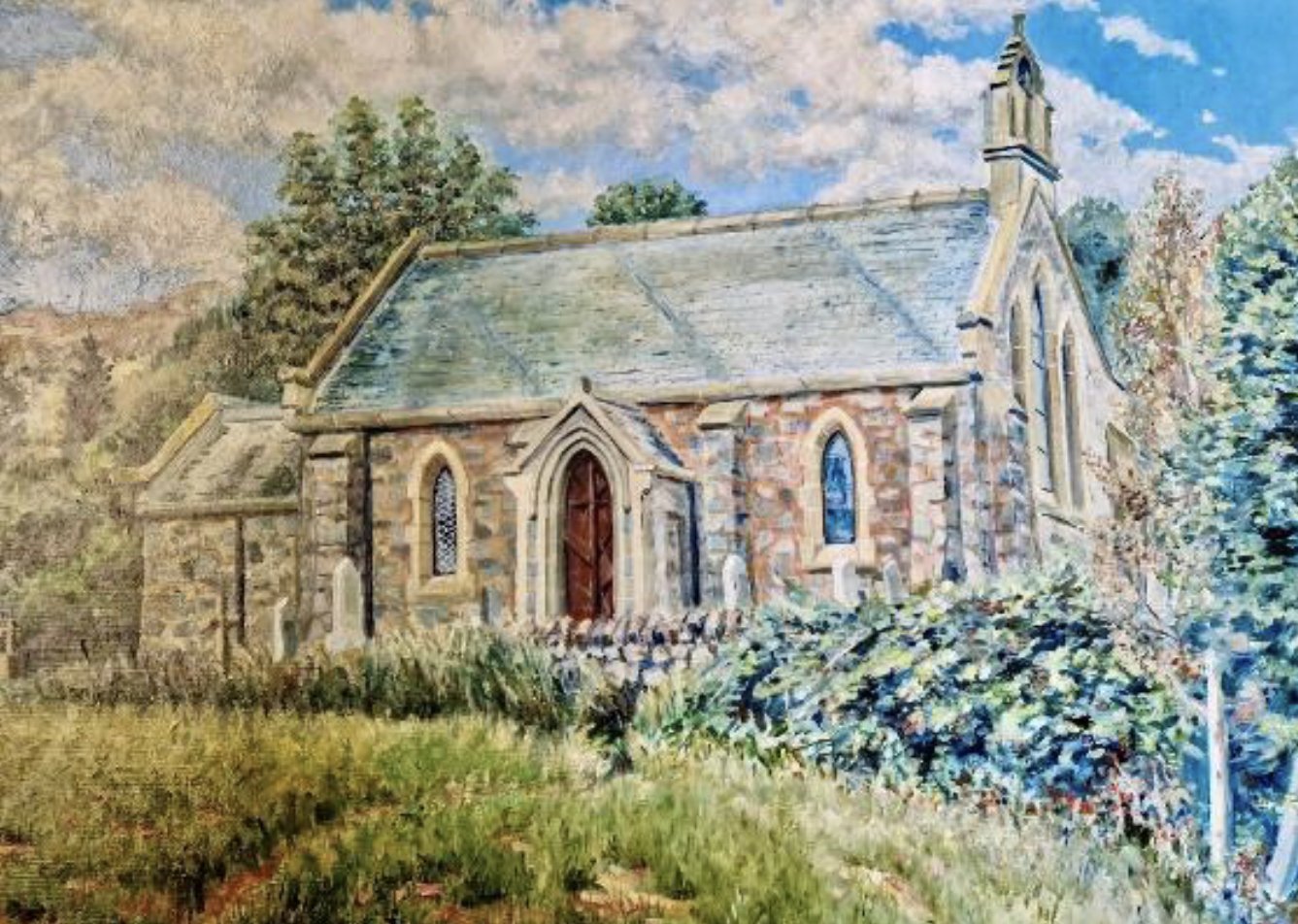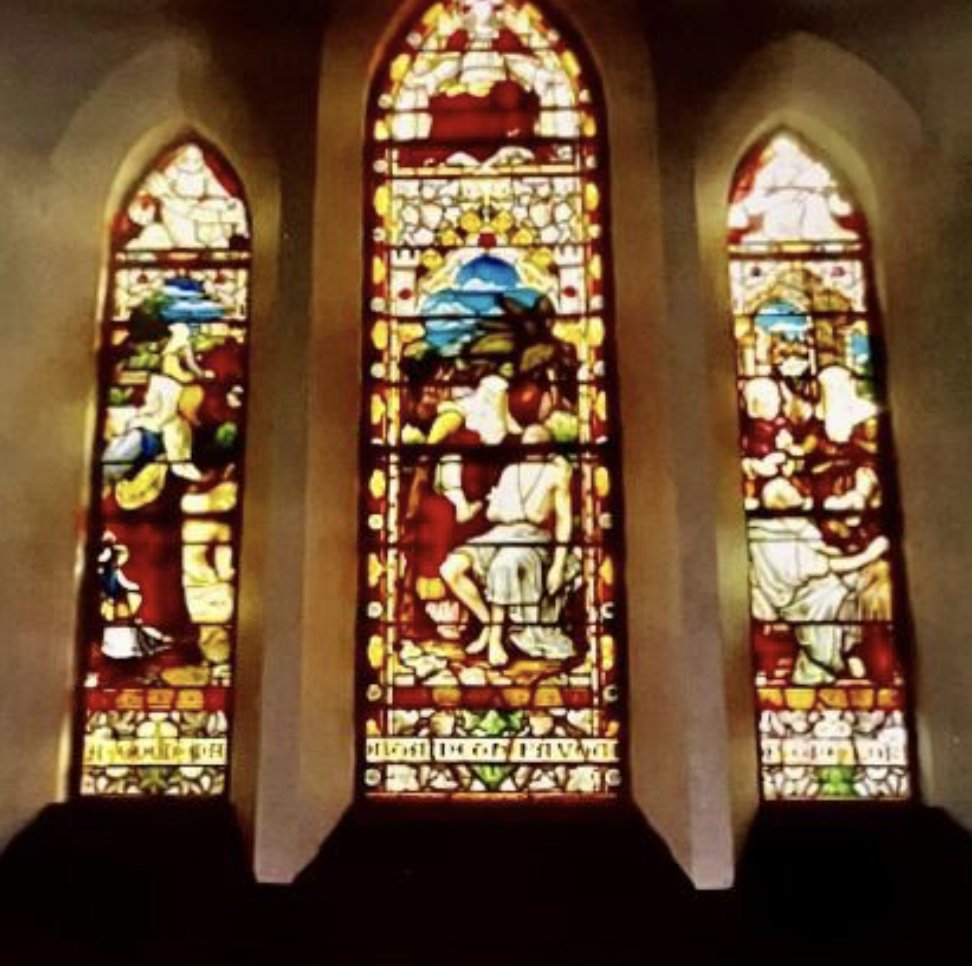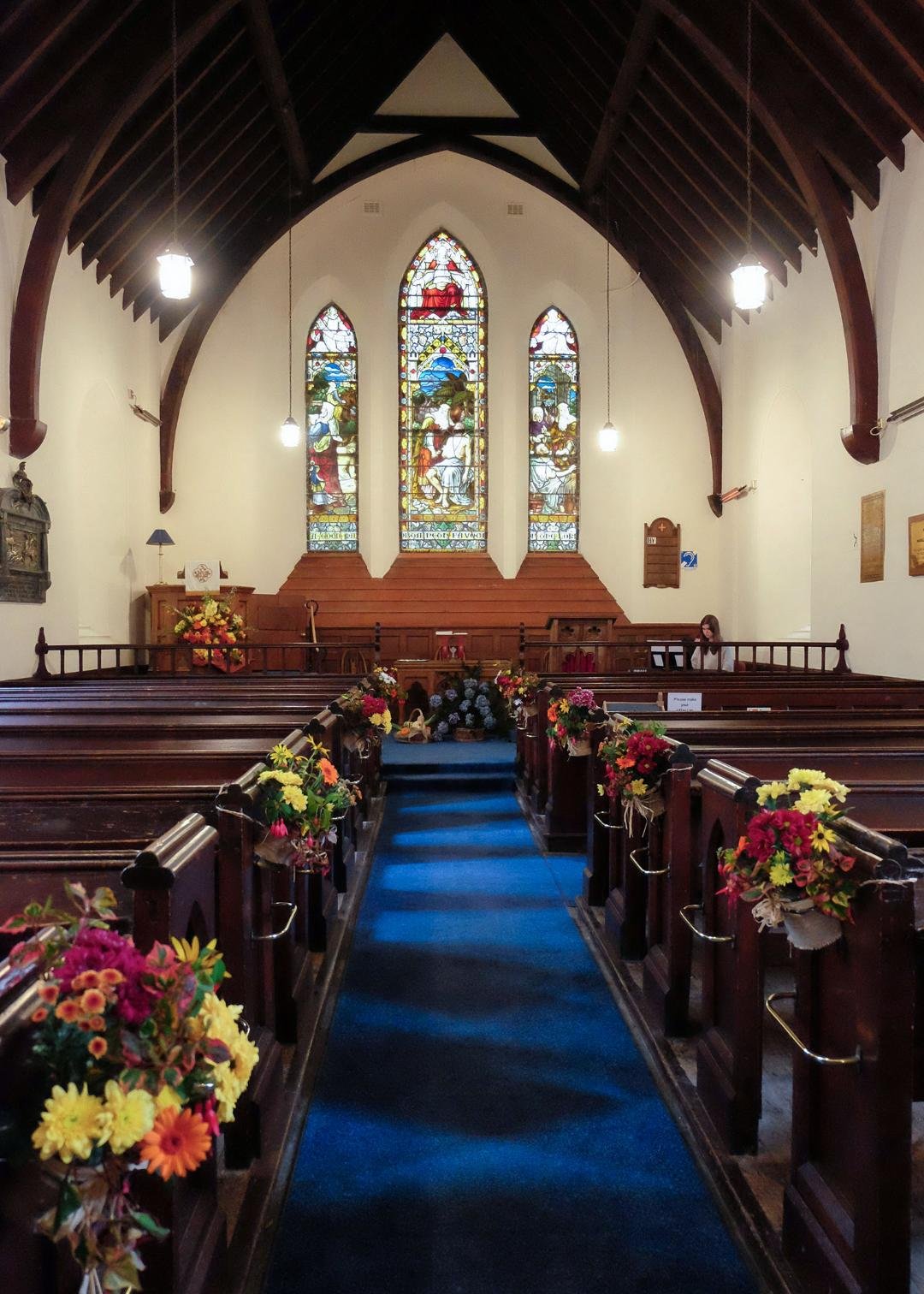Thousands of Years of History
There is evidence of worship reaching back over a thousand years on the site where Trossachs Church currently sits.
Take a look below to learn more on the history of its development over time.
Ancient Times: The Start of Trossachs Christianity
St. Kessog (460-520 A.D.) thought to be a disciple of St. Patrick, came from Ireland to Scotland looking for new areas to convert to Christianity. He started in the lands of Lennox and then made his way up to southern Perthshire. To this day, many local places of Christian worship have been dedicated and/or named after St. Kessog, as evidenced by St. Kessog’s church in the centre of Callander.
It is likely that St. Kessog was one of, or the person, to bring Christianity to the Trossachs and potentially preached on many spots that we now have present buildings of worship. However, it was to be 13 centuries before the people of the Trossachs had a comfortable, indoor place to worship.
Medieval Times: ‘In the Open Air’
During the Medieval period, Trossachs was part of the Kilmahog Parish, where the local church was dedicated to St. Chug and was first recorded in 1239.
Only the burial ground of this parish’s time period remains, with stones dating back to the 1600s.
Over these many centuries in the Trossachs, Christian worship was celebrated in various small buildings that haven’t lasted. More interestingly though, there was a strong tradition of ‘open air preaching’. This was the practice of doing exactly what it sounds like - having services of workshop in the outdoors.
Some notable places of open air preaching in the Trossachs include Tom Na Chessaig “Hill of Chessaig”, situated in the present day Callander Meadows, and Achray, the name of the loch the Trossachs Church is now located on. Depicting what happened there, Achray actually means ‘a field of devotion; a place of devotion in the open air’.
1735: Construction of St. Kessogs
The beautiful St. Kessogs Parish Church was built in Callander with seating for 800 people and with communicants numbering 500.
From Brig o’ Turk to St Kessogs and back was 14 miles, and on a very rough track! This was very impractical for the residents of Loch Katrine, Glen Finglas, and surrounding areas and so they had their own ‘building of sorts’ seating 200 worshippers thought to have been sited near Dundarroch.
1803: The Wordsworths
William and Dorothy Wordsworth toured the Trossachs with Samuel Coleridge. Dorothy penned ‘Recollections of the Trossachs’ while William wrote a sonnet:
Ben Venue from the Path by Loch Katrine from a copy of an antique postcard, photographer unknown.
Copyright undetermined. Image courtesy of University of St Andrews Library.
1800s - The Tourist Boom
The 19th century saw the beginning of the tourist boom in the Trossachs. The railway as well as disposable income saw the start of the rise of the visitors to the area. Here are some of the notable visitors and their reflections of their time here:
““The Trossachs… Rocks, rivers, and smooth lakes more clear than glass. Untouch’d, unbreathed upon…””
1833-1837: Improving Area Infrastructure
Celebrity travellers also included Hans Christian Anderson, George Elliot, Jules Verne, John and Effe Ruskin, John Millais, and Robert Louis Stevenson. Other writers, artists, and even royalty also came and the Trossachs became a very fashionable destination (and more affordable than a ‘Grand Tour’ of Europe.
Unfortunately, accommodation, that was already hard to come by, was also considered unfit for such visitors. In 1818 a visitor named Thomas Carlyle stayed at a farm steading called Ardcheanachrochan (Gaelic meaning ‘high end of the rock’) and about the place despairingly wrote… “A dirty, smoky hut with no provisions in it but bad oatcakes and unacceptable whisky.”
The local lairds and gentry were embarrassed about the state of facilities they could offer their affluent friends from the south, and in 1837 the government of the time stated the need for more churches and suitable accommodation in the area. Ardcheanachrochan was replaced by the impressive Trossachs Hotel, designed in a modern, Scottish Baronial style by architect George Kennedy, whose father was a ‘factor’ (land manager) for the Drummond Estates.
Illustration by Chiara Fingland.
Sir Walter Scott (1771-1832)
Was also a frequent visitor to the Trossachs and the local landscape was his inspiration to write many very popular historic and romantic works. His publication of his poem ‘Lady of the Lake’ (1810) sparked tremendous interest in the area.
In 1817, Scott published his own account of the legendary hero ‘Rob Roy’ which continued to popularise and promote the Trossachs as a tourist hot spot.
The Trossachs Hotel from the Aberfoyle-Trossachs Road (above) and from the front garden (below), date unknown, from a copy of an antique postcard, photographer unknown.
1843 - National Disruption Felt in the Trossachs
1843 was the year of the “Disruption” in the Church of Scotland when dissent arose over the power of the government versus the kirk.
At grass roots levels there was disagreement as to congregations having the right to appoint their own ministers. In 1843, the retiring Moderator at the General Assembly led the revolt, and a third of the ministers walked out with him. They declared Jesus as the head of the church rather than the state being the head of the church. They formed the Free Church of Scotland, a congregation of which was established in Callander for awhile..
A Church for the Trossachs, in the Trossachs
In 1847 the residents of the Trossachs petitioned the Church of Scotland local Presbytery for their own local church so they wouldn’t have to travel the rough 14 mile round trip to the Callander Kirk.
In 1848 the congregational petition was granted. The site, which was part of the Drummond Estate was chosen and gifted by Lord and Lady Willoughby d’Eresby and both gave significant financial support for the church to be built.
The Trossachs Church was designed by Charles Kennedy, the same architect who designed the Trossachs Hotel, as it was Lady Willoughby d’Eresby’s husband was Lord Willoughby, Earl of Ancaster, who had commissioned the Trossachs Hotel.
Lady d’Eresby considered the site for the church to be…
On October 14th, 1849, Trossachs Church was opened by the then Moderator of the Church of Scotland, Dr. Simpson. The building cost the sum of £325 and was under the jurisdiction of Callander parish church and oft referred to as ‘the mission church’. However, the church did have it’s own minister, Rev. Edward P. Dewar. The Kirk entrance is on the south side, facing Loch Achray. The pews originally faced from east to west. The church served the local community and the visiting tourists to the area.
Many locals were Stewarts, as this clan had hereditary ties to Glen Finglas. It is notable that 5 out of 7 church trustees were Stewarts at this time.
1850 saw the first ‘Thomas Cook Tour’ of the Trossachs. He was a Baptist minister and promoter of the Temperance movement, and his tours were intended to enable working class people to travel, and so to educationally broaden their minds.
Lord and Lady d’Eresby, photographs of the original portraits with kind permission from Tigh Mor.
“The loveliest spot in rural Scotland, in a magnificent setting of mountains, loch, forest and meadow.”
A Church for Everyone - from canines to Royalty
In 1853 artist Sir John Millais attended Trossachs Church and while there were treated to psalms sung out by a precentor. As the small man raised his voice, so did his dog, as can be seen in the pen and ink sketch by Millais to the left (produced by kind permission, copyright to G.P. Landow).
After the service Millais suggested they might be better off with an organ, to which the precentor was reported to have said “ Wad ya hae us tak tae the Deil’s kist o’ whistles!”
Queen Victoria, accompanied by Princesses Louise and Beatrice, came to holiday at Invertrossachs House (previously Drunkie House, the home of Lady McNaughton) in 1866. The Queen’s diary entry of Wednesday, September 1st noted that “there was a very well-behaved crowd” at the quiet Callander Station and the nest day she wrote of passing a “lovely little church” near Trossachs Hotel.
Independence and Upgrades
In 1866 under the leadership of Rev. John McDiarmid, the church became independent (and would remain so until 1954).
A harmonium was installed in the church is 1873 to the delight of the congregation.
Painting by Robert Forrest, date unknown.
Tragedy in the Trossachs
Sadly, on the 20th of April 1880, John McGowan McCall aged 3 years and 10 months old, son of a local shepherd, accidentally drowned at Brig o’Michael. His funeral was recorded in a painting by Sir James Guthrie, on of the ‘Glasgow Boys’. The minister in the painting is Rev. McDiarmid. The painting is titled ‘A Funeral Service in the Highlands’ and now hangs in the Kelvingrove Gallery in Glasgow.
Modernisation for the 19th Century
In 1893 an American organ was installed after £63 was raised by public subscription and commemorative stained glass windows were installed by the Dunsmure family of Glenbruach. The Dunsmure family were very generous benefactors of Trossachs Church.
Subsequently in 1894/95, the pulpit and communion table were moved, and the pews were turned to face east, so enabling the congregation to fully appreciate the main window depicting the story of the Good Samaritan.
The war memorial, made of wood from the HMS Britannia, was installed in 1919.
1950s-Present: An Uncertain Future
In 1954 the church faced closure until Rev. McCorquodale offered to add the church to his charge at St. Kessogs in Callander; full circle, once again.
In 1955 it was agreed to install electricity when it became available in the area.
Trossachs Church was documented as a listed building, Category C, in 1971.
In 1985 the union of St. Kessog’s, St. Brides and Trossachs Church was completed.
The 150th Anniversary of the Trossachs Church was in 1999. The event was commemorated by the current Lady Willoughby d’Eresby planting a Roman tree in the church grounds.
What’s Happening Now?
In 2023 Trossachs Church was again earmarked for closure. Friends of the Trossachs Church was formed to reach out to all possible interested parties to register their support and to help find a new way forward for this very special place.
All interested parties near and far can register online to become a ‘Friend of Trossachs Church’ and thereby be kept up to date with further developments.
In 2024, Trossachs Church celebrated it’s 175th Anniversary with a service of music celebration on October 6th, and a special afternoon of music, fellowship, and refreshments on October 13th.
A very big thank you to Mairi Campbell for her dedicated research and writing of this page, originally in leaflet format and modified for the website by Keena Wildman.
